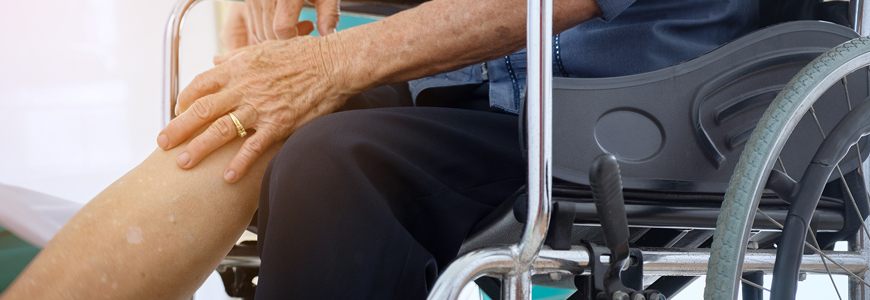With the increase in demand for outpatient total joint replacement procedures, even before the COVID-19 pandemic, same-day surgery has become a system-wide priority at Duke hospitals. Michael P. Bolognesi, MD, chief of the Duke Adult Reconstruction Division and orthopaedic surgeon specializing in hip and knee arthroplasty, says this focus is part of a national trend but that the norm across the country is still inpatient surgery, which historically has required three to five days of recovery post-replacement.
“More and more people are interested in outpatient service, but most still come in thinking that there's no way they would leave the same day,” Bolognesi says. “We've done a great job of helping people recover more quickly, control their pain, and access early physical therapy so that it’s very reasonable and safe to get some percentage of patients home the same day.”
At Duke, Bolognesi says that the percentage is between 10% and 25%, adding that the COVID-19 pandemic has accelerated the need for outpatient options. Bolognesi adds that payers, including the Centers for Medicare & Medicaid Services, are also beginning to recognize that a significant percentage of patients needing total hip and knee arthroplasty should be treated on an outpatient basis. “This helps cut costs and is important as we continue value-based care,” he says.
While these types of procedures are often delivered in a freestanding ambulatory surgery center, Duke is also providing them every week in a true hospital setting, Bolognesi says.
“Due to the volume that we do, there are a number of healthier patients undergoing semi-elective procedures for which outpatient service is appropriate and safe, and we are able to provide them with shorter stays with potentially lower exposure risks because of the strong separate pathway we have in place here at Duke,” he explains. “Because of the size of our hospitals, we’re able to manage an allocated area where these patients can recover overnight and where we control which patients are coming in and out.”
Patients who are the best candidates for outpatient total joint replacement are typically healthy, with a low American Society of Anesthesiologists score, BMI, and number of comorbidities, and they’re motivated to leave the same day, Bolognesi says. But even those with comorbidities such as hypertension or diabetes mellitus have the potential for outpatient service, “as long as those conditions are appropriately managed,” he adds. Depending on a patient’s overall health, those with hip or knee arthritis undergoing total joint replacement may also be able to go home the same day.
“Our ability to offer an outpatient option in a short-stay setting with a separate recovery unit also enables us to get appropriate cases done efficiently and will help us take care of the backlog of patients that was created due to COVID-19 cancellations,” he says.
Bolognesi credits the multidisciplinary team’s operational readiness across all three Duke hospitals for the ability to identify appropriate patients, provide preoperative education specific to their procedure, and communicate seamlessly across departments, including anesthesiology, physical therapy, and nursing.
“As a large hospital, we know how to do arthroplasty at the highest level in the inpatient setting, but that also means we have the clinicians and care teams to do outpatient services at the safest and highest levels with the best outcomes,” he says.
